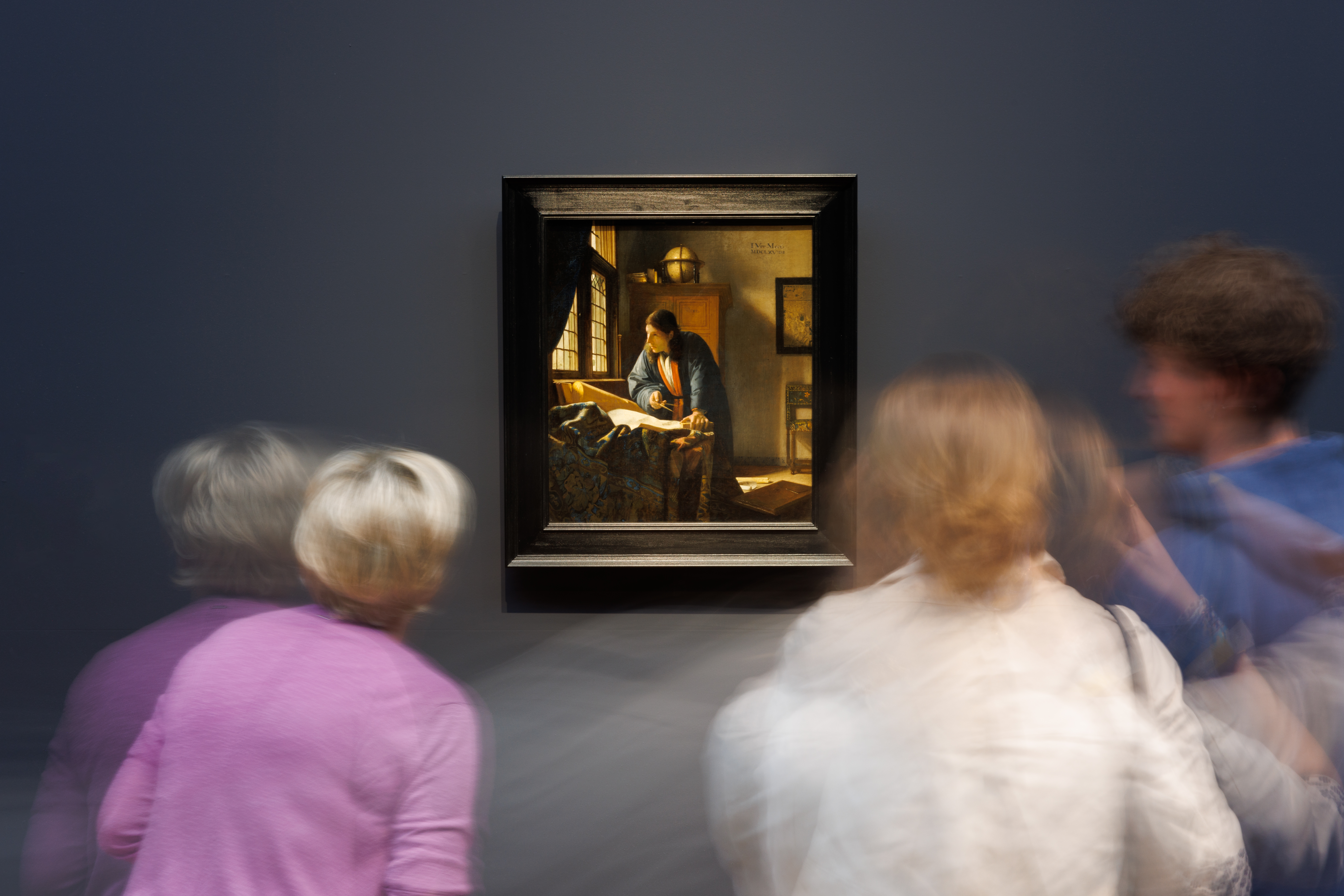The exhibition led to new art historical and material technical research, both within and outside the Rijksmuseum. This has yielded more insights into his working process, his knowledge of optical tools, the context in which his art was created, and his life in Delft. The main findings are:
- Material technical research provided a better understanding of the underpainting of the Milkmaid. It reveals that Vermeer used quick brushstrokes to establish the composition. The can and board visible in the underpainting, but not in the final painting, indicate that Vermeer continued to seek tranquility and the perfect composition during the painting process. More on this: Rijksmuseum reveals major discoveries on Vermeer's painting The Milkmaid - Rijksmuseum.
- New art historical research shows the influence of the Catholic Jesuit order in Delft on Vermeer's life and work. Vermeer also came into contact with the camera obscura, the precursor to the photographic camera, through the Jesuits. More on this: Revelatory new insights unveiled in new Vermeer biography - Rijksmuseum
- Contrary to what was previously assumed, it is revealed that Pieter Claesz van Ruijven was not alone, but explicitly together with his wife Maria de Knuijt, the most important patron of Vermeer.
After the exhibition, the research continues. In the coming weeks, the Rijksmuseum will be investigating the paintings View of Delft (Mauritshuis, The Hague), The Geographer (Städel Museum, Frankfurt am Main), Saint Praxedis (Kufu Company Inc., on loan to The National Museum of Western Art, Tokyo), and Christ in the House of Martha and Mary (National Galleries of Scotland, Edinburgh). The research on Vermeer's paintings is being carried out in collaboration with the Mauritshuis and the University of Antwerp and the results will be published in 2025, 350 years after Vermeer's death.
Image : Rijksmuseum/Kelly Schenk
Image on top : Rijksmuseum/Henk Wildschut

